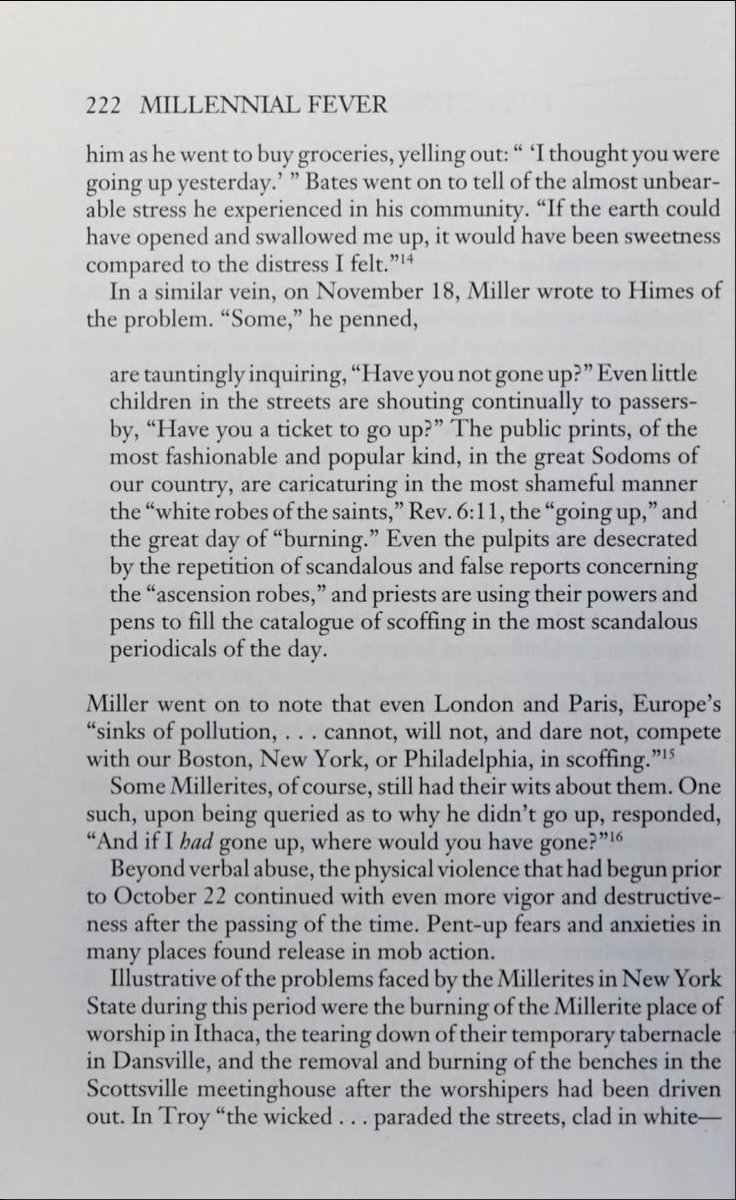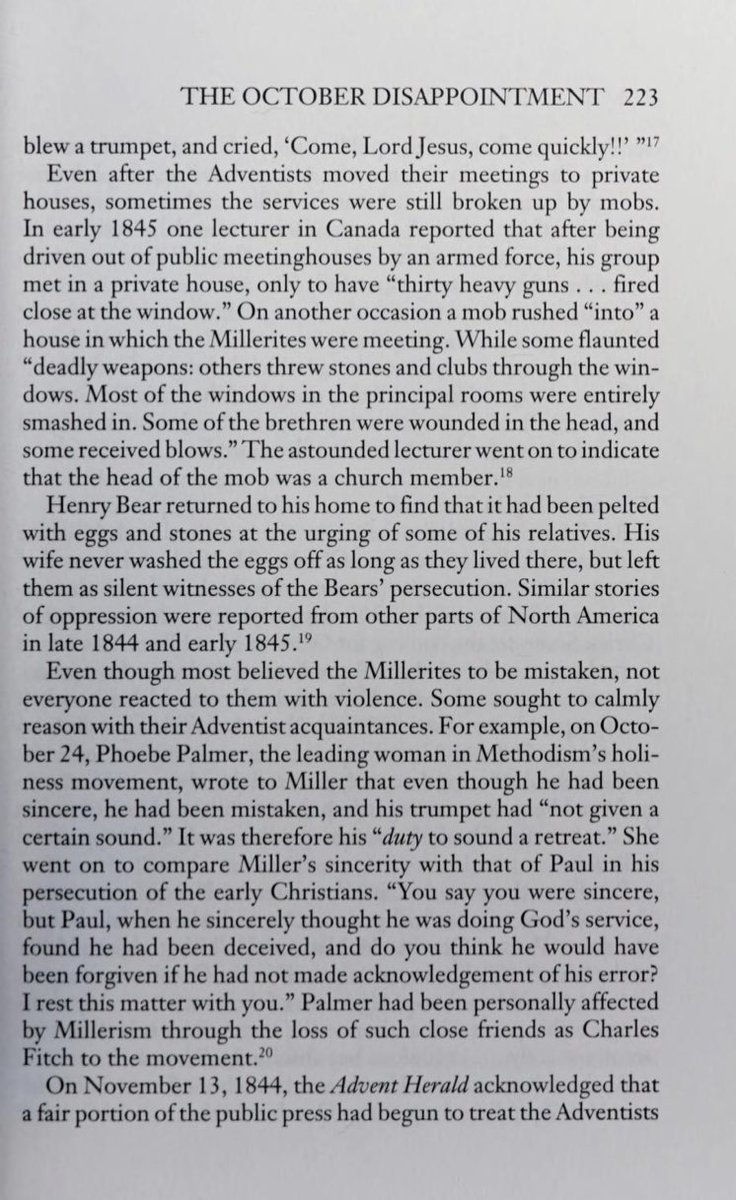This is a great question that deserves a much longer response, but here’s a tip-of-the-iceberg version for anyone interested in cognitive dissonance theory and it’s possible relevance to Christian origins... https://twitter.com/triplmath/status/1292913589934850050">https://twitter.com/triplmath...
Part of the problem, of course, is that we don’t have well documented evidence of the disciple’s deaths or of the nature of their eyewitness experiences. And of course no two examples are exactly the same.
But those caveats aside, yes, there are many examples of people risking their lives in their continued commitment to beliefs that, from an outside perspective, had been decisively falsified.
There are also many examples of people having “eyewitness experiences” that served the same dissonance-reducing function as the appearances of the risen Christ.
One of the most striking examples of both increased commitment through persecution and dissonance-reducing experiences is that of the Millerites in the wake of the Great Disappointment of 1844.
Opposition to the Millerite movement was fierce in many places. After the failure of their expectation for Christ’s return, that opposition sometimes turned into mob violence. Millerites were attacked with clubs and knives, some were shot at, and others were tarred and feathered.
While all of this was too much for many of the less committed Millerites, for others it only strengthened their commitment to the movement and increased their belief that they were part of the persecuted end-time remnant described in Scripture.
The day after the Great Dissappointment, one Millerite leader named Hiram Edson was walking through a cornfield to avoid the mocking jeers of his neighbors when he had what he claimed was a vision in which he was given revelation from heaven.
The crux of the vision was that Christ had not failed to fulfill his promise, but the Millerites had simply misunderstood a key point of the prophecy. They thought Christ was coming to earth, but Edson now understood that the “sanctuary” referred to the sanctuary in heaven.
So instead of Christ returning to earth on October 22, 1844, that date marked the moment when he, as the great high priest, entered the most holy place of the heavenly sanctuary (ala Hebrews 9-10) in preparation for his return to earth.
Thus the apparent non-fulfillment was, for those with eyes to see, actually a powerful partial fulfillment and a guarantee of their future hope.
Soon after Edson’s experience, a woman named Ellen Harmon had a series of visions which she and many other Millerites took to confirm the “heavenly sanctuary” idea. Today Harmon is better known by her married name, Ellen G White, the founder and prophet of Seventh-Day Adventism.
Today there are over 25 million Seventh-Day Adventists in over 200 countries, making it one of the most widespread Protestant denominations, and the doctrine of Christ’s heavenly coming in 1844 has been a central pillar of their theology for over 170 years.
For a good treatment of the Millerite movement, see “Millennial Fever and the End of the World: A Study of Millerite Adventism” by the Adventist historian George R Knight. https://archive.org/details/millennialfevere0000knig/mode/1up">https://archive.org/details/m...
For a good study of Millerism/SDA in relation to cognitive dissonance theory, see J. Gordon Melton, “Spiritualization and Reaffirmation: What Really Happens When Prophecy Fails,” American Srudies, 1985, Vol. 26, No. 2, pp. 17-29.

 Read on Twitter
Read on Twitter




